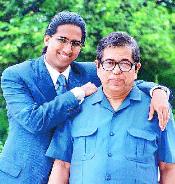Think about your favorite food for a moment. It doesn’t matter what it is—just fix your mind on the dish you enjoy most. Now, really think about the flavor profile in particular. What does your favorite food item really taste like?
The answer is more complicated than you might think. In a very real way, it might depend on where and when you eat it.
Taste is Relative
That’s because, according to scientists, taste isn’t just a matter of the mouth and the tongue. It’s actually a much more complicated phenomenon that encompasses all of your senses, and is directly impacted not just by the food you’re eating, but the environment in which you’re eating it.
For instance: Did you know that loud noises can actually influence the way you taste your food?
It’s true—and it’s why people eating their meal in a busy airplane cabin may perceive their flavors a bit differently than those eating in, say, their quiet dining room.
A Study in Flavor
The details are these: In a recent study, 48 people were asked to try different liquid solutions encompassing five different flavor profiles—sweet, salty, bitter, sour, and umami. But here’s the catch: Some of these study participants enjoyed their tastes in a room with normal ambient noise, and some dined in a room simulating a noisy airplane.
When it comes to the salty, sour, and bitter tastes, the researchers did not notice any big difference in the ambient diners and the noisy cabin-dwellers. Where it gets interesting is with the sweet and umami flavors. For those dining in the noisy airplane cabin, umami flavors were more pronounced, while sweet flavors were diminished.
In other words, the actual environment can dictate the intensity of different flavors—something that is not only interesting, but loaded with implications.
Customizing Taste
“Truffle Burger courtesy of Umami Burger”
For example, researchers say these study results could be used to engineer superior dining experiences in certain environments—like, well, airplane cabins. A menu emphasizing umami and downplaying sweet flavors could be a boon to frequent flyers.
And this new research is hardly isolated. Other recent studies have found that—for example—the sound of your crunch can change your perception of a potato chip’s flavor. Even the weight of the cutlery you use to eat your meal can impact your enjoyment of said meal.
In a nutshell: Taste isn’t just a matter of, ah, taste. It’s an immersive experience that involves all the senses. So when you’re planning to enjoy your next meal, think beyond the items on the menu—and make sure you’re dining in an environment that will enhance, not diminish, your culinary pleasures.






